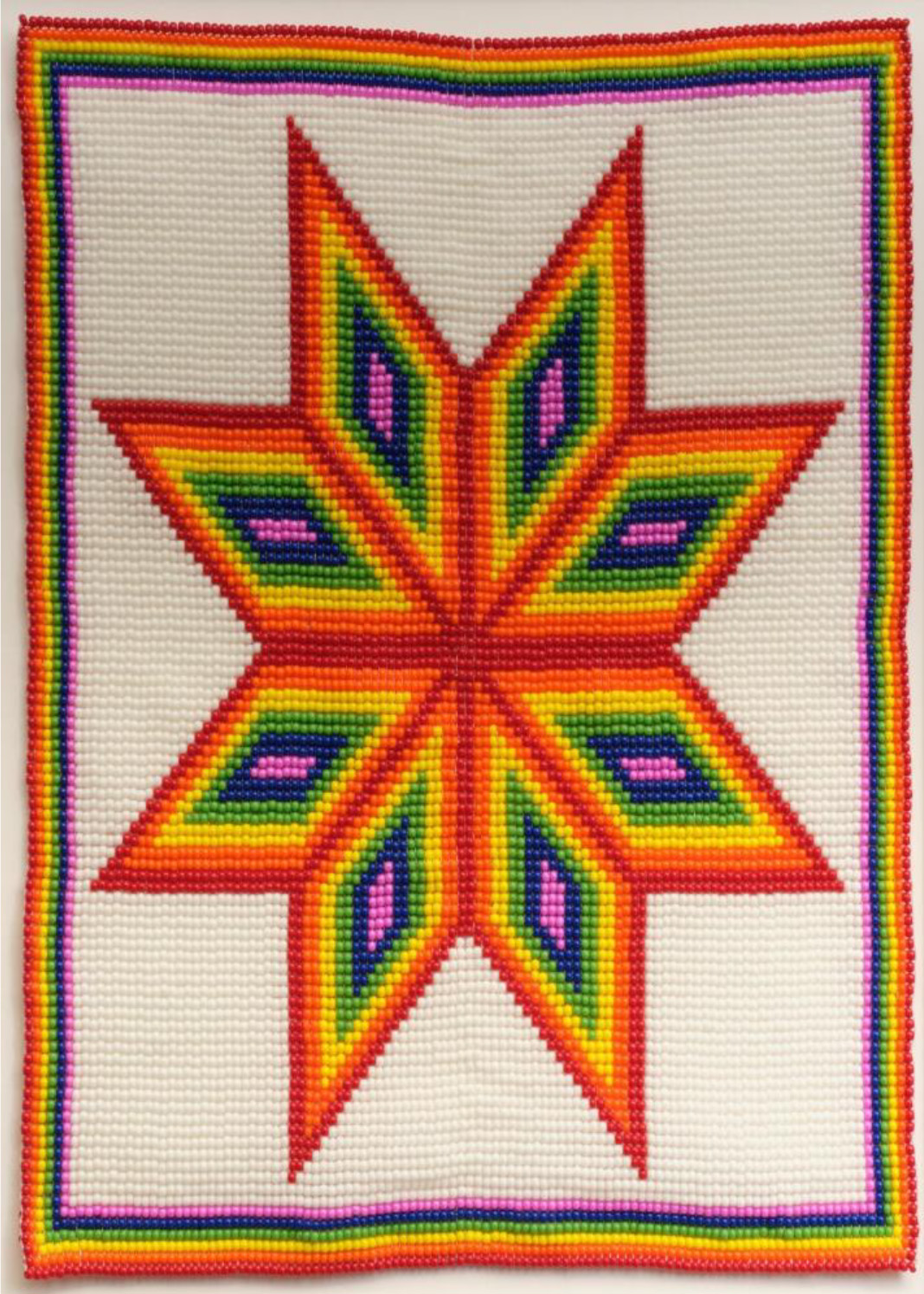2027 Exhibits
In Summary:
Force Field | Bonnie Conly
Force Field is a powerful installation of 100 traditional Ukrainian Motanka dolls by Bonnie Conly, symbolizing protection, resilience, and hope in response to the 2022 invasion of Ukraine.
On The Ground | Jan Jenkins
Inspired by Lauren Carter’s novel Swarm, Jan Jenkins’ On The Ground series uses natural materials and handmade techniques to explore survival, adaptation, and connection to the land.
Roadshow Collection | Riki Kuropatwa
Riki Kuropatwa’s paintings capture quiet moments in public “third spaces,” reflecting human connection, aging, and our relationships with everyday objects.
S’íwes te Tém:éxw (Teachings of the Earth) | Tanya Zilinski
Tanya Zilinski’s S’íwes te Tém:éxw bridges Indigenous teachings and scientific principles through art inspired by natural patterns and personal reflection.
Force Field | Bonnie Conly
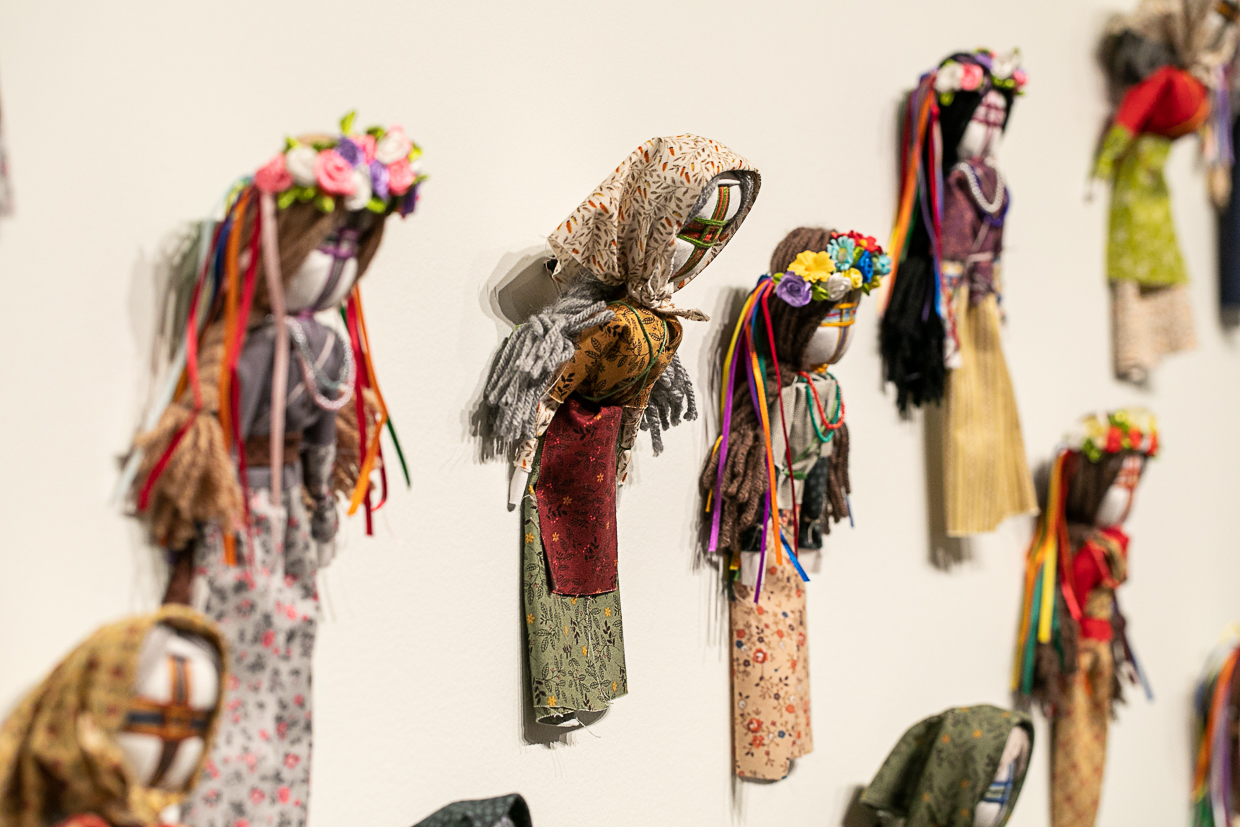
Force Field is an installation of 100 original Motanka (Мотанка) dolls—Ukrainian talismans believed to embody female spirit and power. This installation symbolizes the resilience of Ukrainian women and offers a message of hope for the Ukrainian people.
When Russia invaded Ukraine on February 24, 2022, many women and children evacuated, but others chose to stay and defend their homes. Traditionally, Ukrainian women would gather to make pysanky (Easter eggs) or share stories. During the war, these gatherings transformed into making Molotov cocktails and taking up arms.
Motanka dolls, a 5,000-year-old tradition, are believed to protect families from harm. Each doll is crafted by folding and winding materials without using needles or scissors, ensuring safety for the ancestors. The dolls contain herbs, grains, and other items to promote survival and healing. Canadian artist Bonnie Conly, of Ukrainian descent, created this installation using materials provided by loved ones, with each knot tied in the dolls representing a wish for peace and well-being.
Artist Biography Bonnie Conly, a professional visual artist with Ukrainian ancestry, has lived most of her life in Saskatchewan on Treaty 6 territory. She holds a B.A. Honours Degree in Art Studio and Art History from the University of Saskatchewan. Her work, rooted in drawing and sculpture, extends into photography, painting, and video.
Conly’s art explores themes of place, identity, and immigration, incorporating geography, history, cultural narratives, and myth-telling. Her representational artworks are rich in symbolism and metaphor.
She has received the 2022 Saskatchewan Foundation for the Arts Jane Turnbull Endowment fund and SK Arts grants. Her residencies include the Grasslands National Park—in partnership with Prairie Wind
and Silver Sage and AKA Gallery. She also participated in the CARFAC SK Foundational and Rural Artist Mentorship programs. A member of the Saskatchewan Craft Council, Bonnie has showcased her work in touring exhibitions with the Organization of Saskatchewan Art Councils and in various public galleries in Alberta, Saskatchewan, Manitoba, and Ontario. Her public installations include a mural in Vegreville, Alberta, and streetlight banners in Pickering, Ontario.
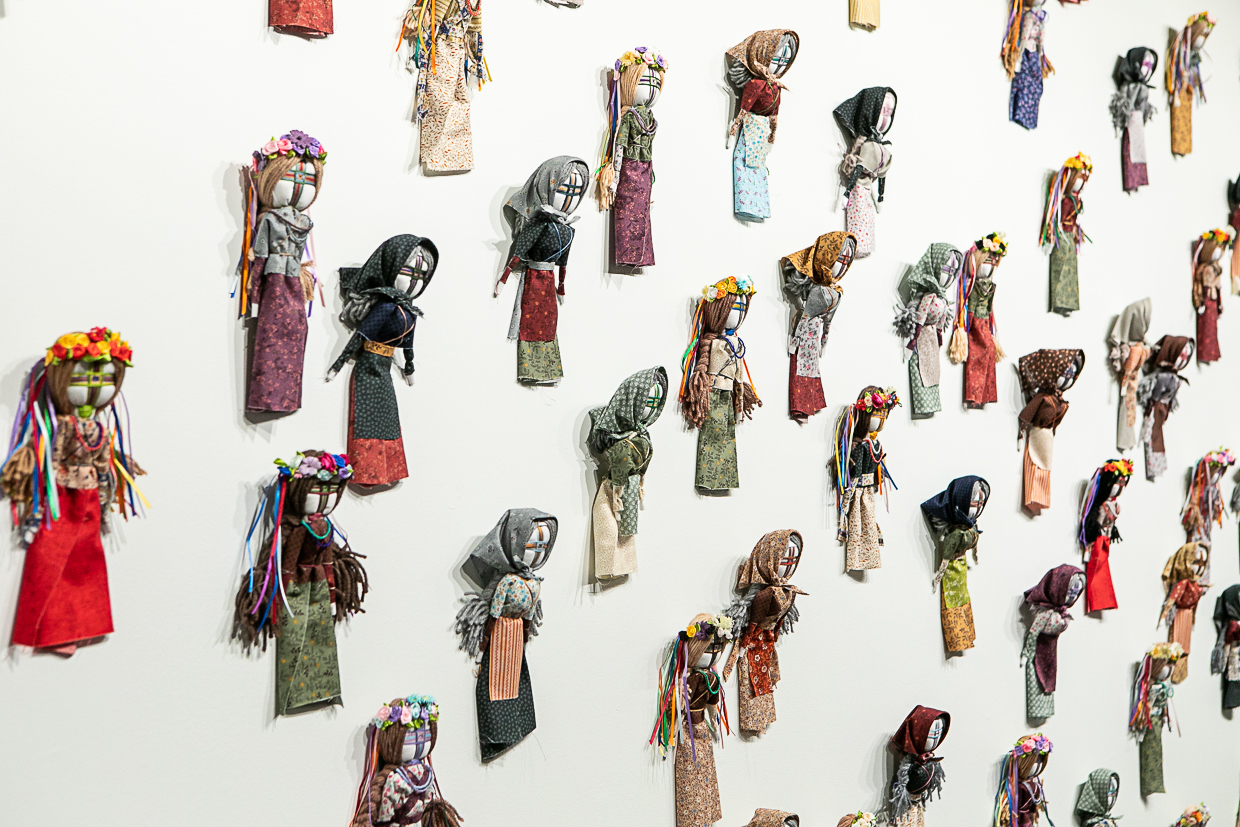
Installation:
Each Motanka is lightweight and comes with a bulb pin hook on the back. These small, lightbulb-shaped hooks easily attach to pin-heads, small nails, or drywall screws. To display Force Field in its entirety, you will need 100 individual nails, pins, or screws.
On The Ground | Jan Jenkins
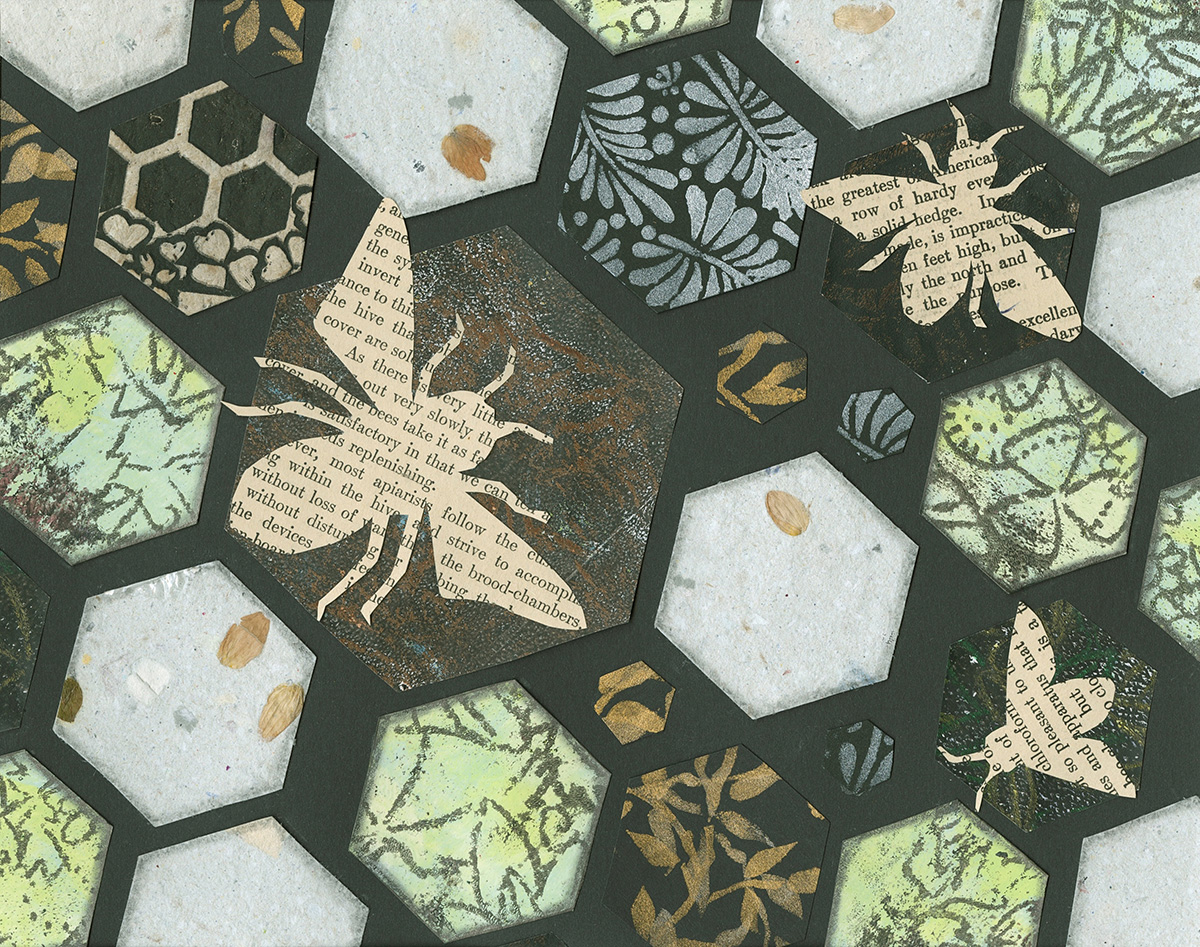
Jan’s On The Ground series responds to Swarm, a novel by Manitoba author Lauren Carter about subsistence survivalism in a dystopian world. The story emphasizes cooperation, compassion, and persistence in the face of adversity.
Inspired by the novel, Jan studied bees, wild edibles in Manitoba, and handmade paper from recycled materials. Her artwork incorporates papermaking, pen and ink, printmaking, and collage to reflect the natural resources available in the wilderness.
This series was originally created for Drawn Together: Stimulus-Response, a group exhibition where 10 women prairie artists responded to the works of 10 women prairie authors. The exhibition debuted in April 2023 at the Art Gallery of Southwestern Manitoba, curated by Lucie Lederhendler. Jan continues to expand this series, exploring Manitoba’s forageable plants and their pollinators.
Artist Biography: Raised mostly in Quebec, Jan worked in Alberta’s energy industry until she moved to Manitoba where she now focuses exclusively on her creative practice. Her work is influenced by the meditative artform of zendoodling along with the intricate repeating patterns found in textiles, decorative tiling, and nature. Most memorable for Jan is having two of her designs selected by the town of Russell, MB to adorn their decorative main street steel arches, and being showcased on Westman Cable TV’s Artist of the Week series. She is a member of The Drawn Together Collective and the Manitoba Society of Artists.
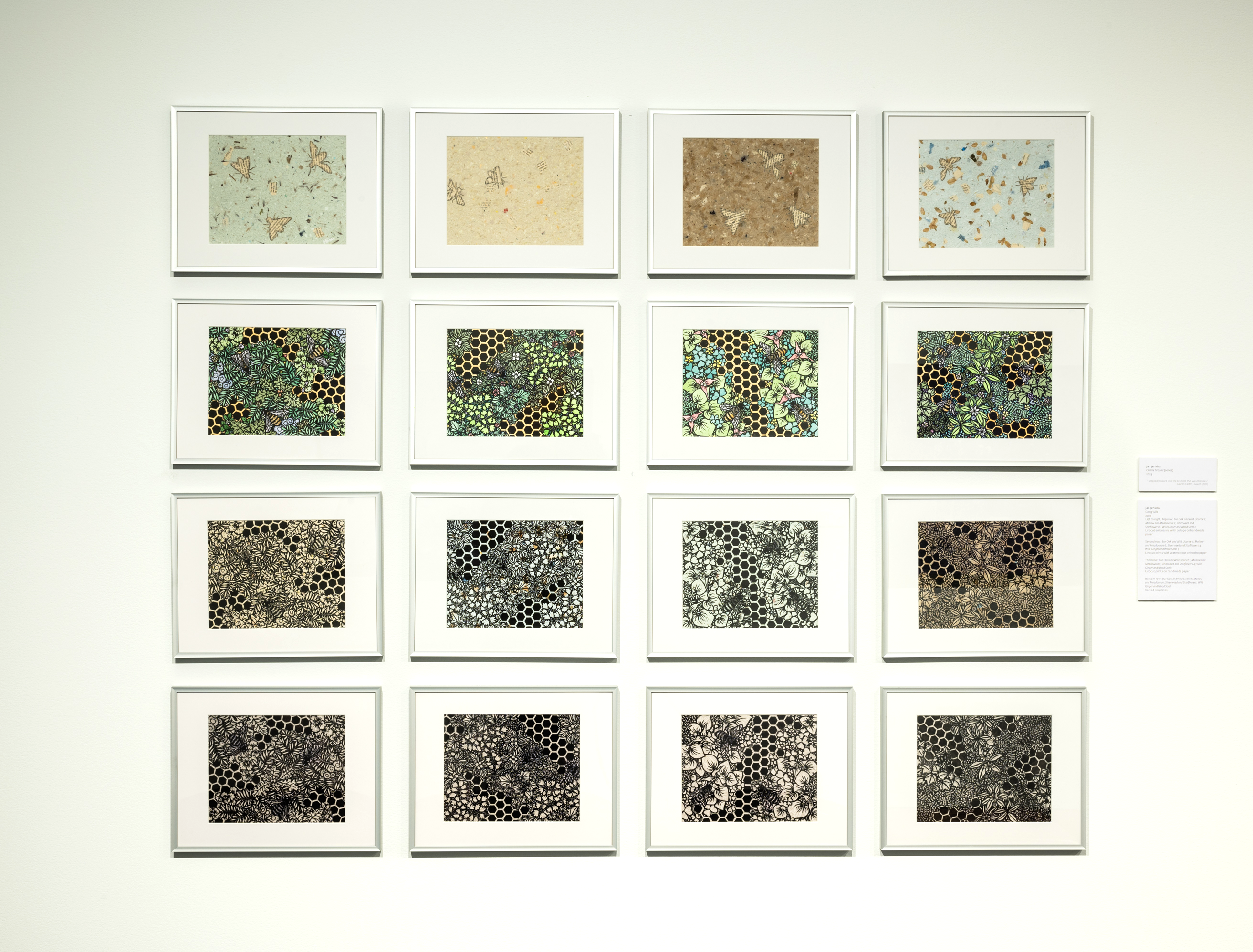
Roadshow Collection | Riki Kuropatwa
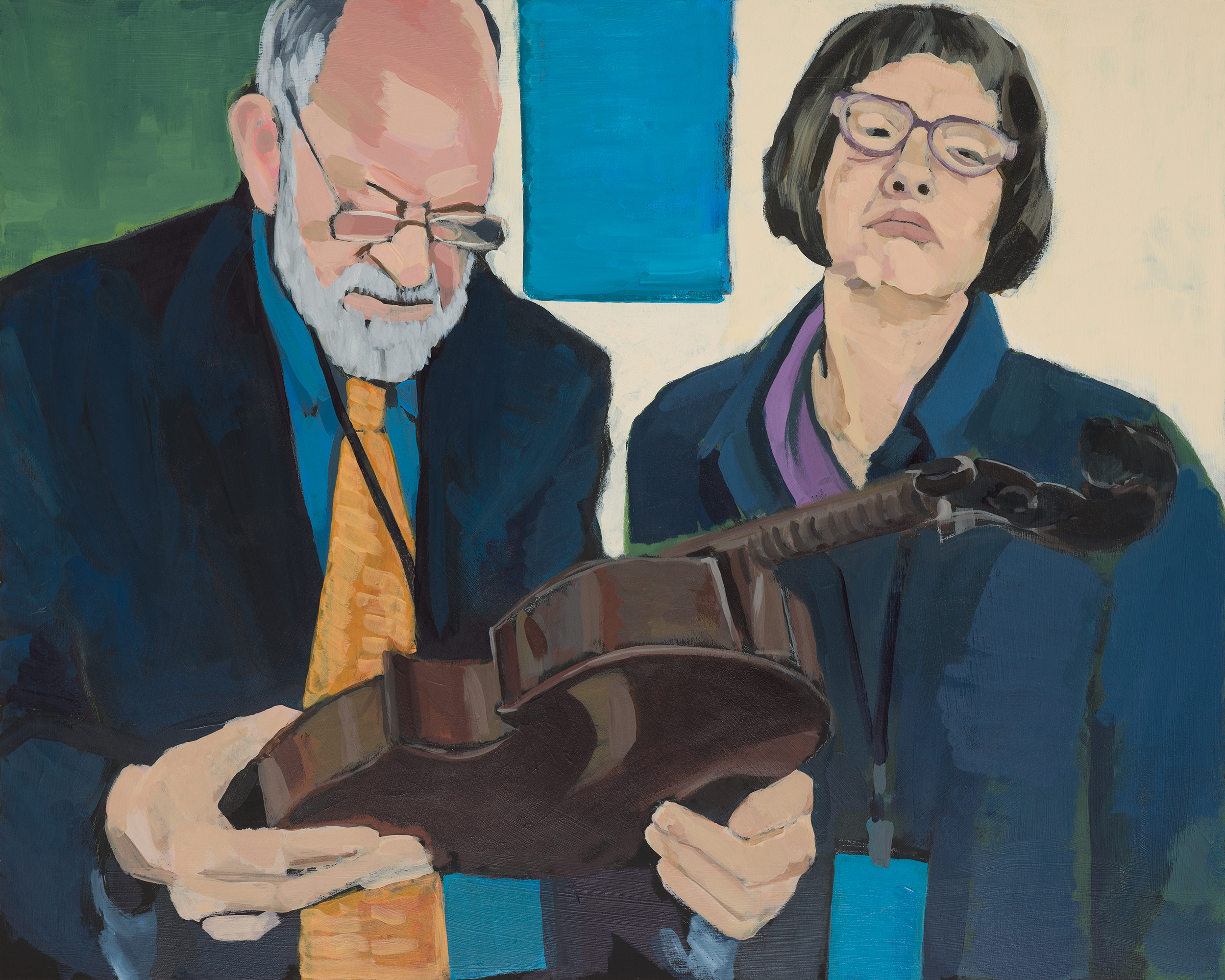
Riki Kuropatwa proposes a painting exhibition focused on ‘third spaces’—public gathering places that are neither home nor work. For the past five years, she has drawn inspiration from the television series Antiques Roadshow, capturing moments of human interaction through painting.
Her work explores the dynamics of social engagement, emphasizing body language and facial expressions. By presenting people talking, listening, or lost in thought, her paintings invite viewers to construct their own narratives. Kuropatwa is particularly interested in older adults, who are often underrepresented in contemporary art.
Recently, her focus has expanded to explore Thing Theory, which examines the relationships humans have with objects. Her paintings serve as a tribute to the shared human experience and the ways we connect with each other and the objects in our lives.
Artist Biography: Originally from Winnipeg, Riki now lives in Edmonton. She is a figurative painter, who works mainly in acrylic on wood panel. Her work explores human dynamics and always has a strong narrative component. Composition, colour, gesture, and facial expression are key features. Her work is highly accessible and invites the viewer to take an active role in meaning-making. Riki obtained her Master of Fine Art from York University, her Bachelor of Fine Arts from the University of Manitoba, and her Bachelor of Education from the Ontario Institute for Studies in Education at the University of Toronto. She has exhibited her work across Canada and is in many private collections and is represented by the Bugera Matheson Gallery in Edmonton.
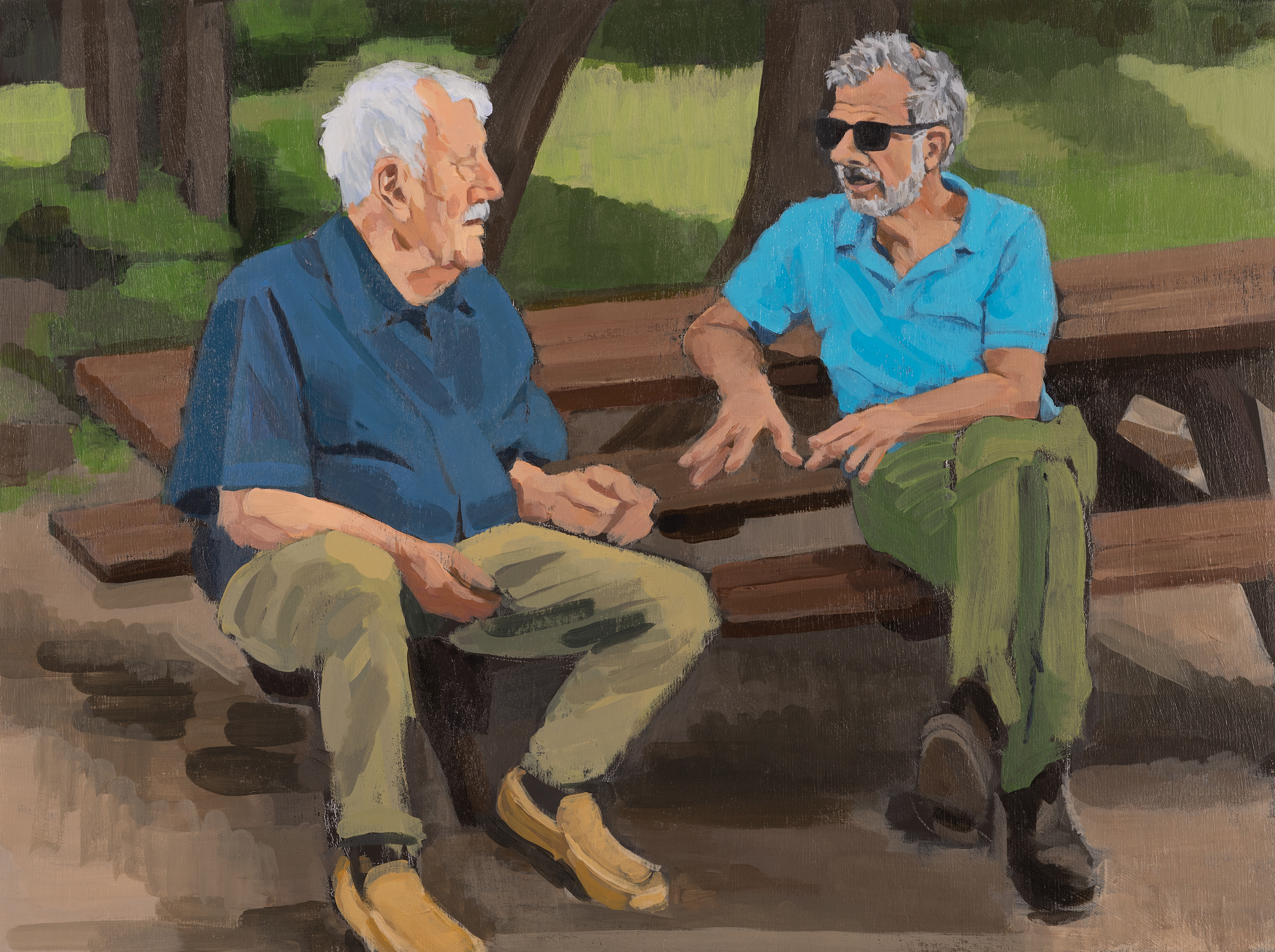
S’íwes te Tém:éxw (Teachings of the Earth) | Tanya Zilinski
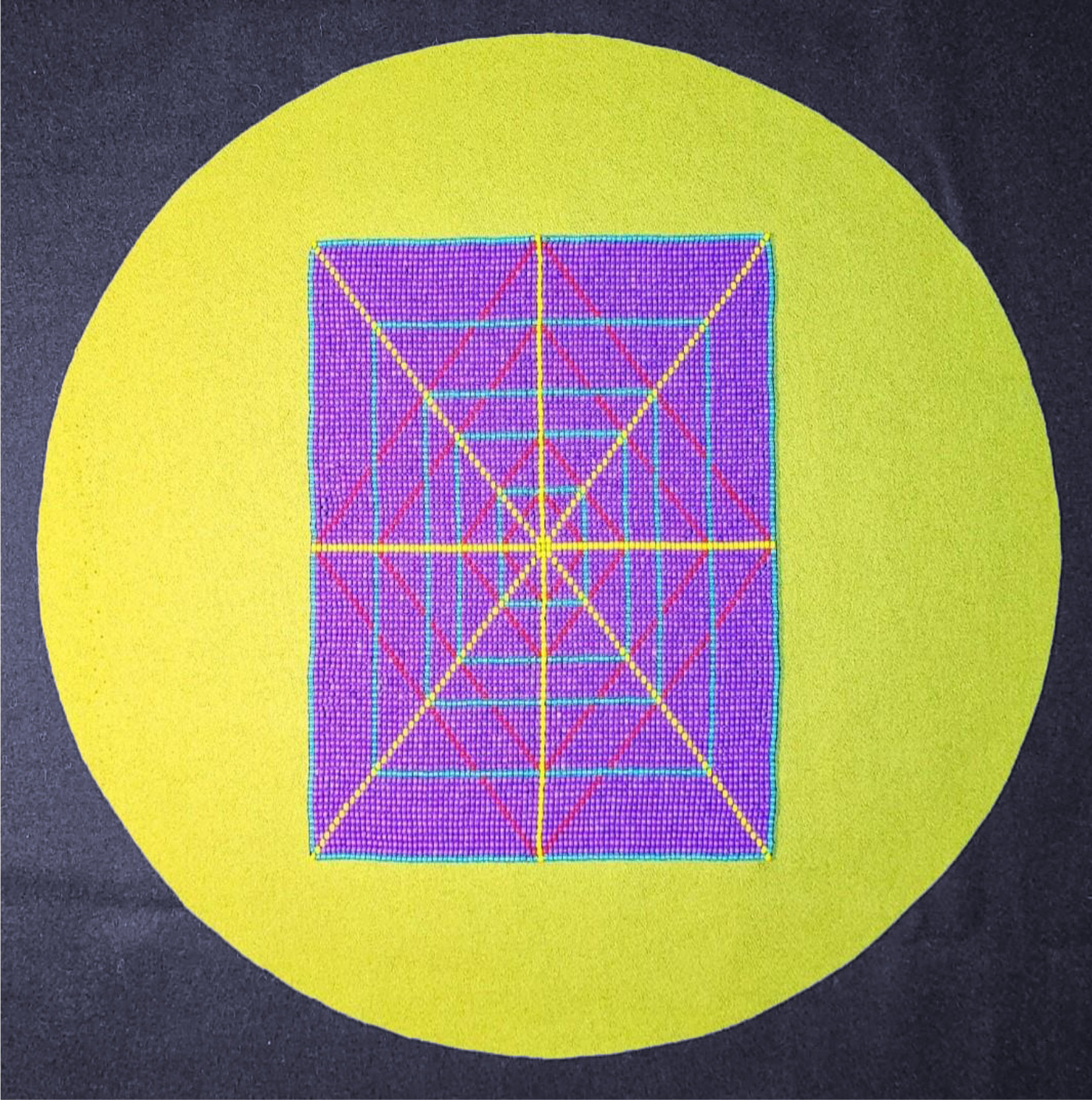
Tanya Zilinski’s S’íwes te Tém:éxw series reflects her life through the lens of Western science and Indigenous knowledge. The series explores patterns in nature, including fractals and chaos theory, and how they intertwine with Indigenous teachings and storytelling.
The title comes from Halq’eméylem, her traditional language, where s’íwes te tém:éxw translates to “teachings of the earth.” Zilinski combines older works with new creations to highlight the connections between scientific and Indigenous worldviews, emphasizing how both shape her understanding of the world.
Artist Biography:
Tanya is an Anishinaabe artist, of Aggaamaakwaa Manitoba and is a member of The Red River Nation with family and ancestral ties to Dakota, Cree, Anishinaabe and Huron Wendat Nations throughout Turtle Island’s Plains and Great Lakes regions on their mother’s side and is Ukrainian on their father’s side. One of their traditional names is Speplól, which means Little Crow and was a name given to them at the age of fourteen.
They were born on Ts’qó:ls, which is the Halq’eméylem name for what is known to settlers today as “Hope, B.C”. Their medium is traditional Indigenous loom beadwork and the retelling of oral stories and teachings through patterns laid out on beadwork tapestries. They were taught to loom bead at 15 years old by an Elder in their community at Chawathil First Nation. Speplól has developed methods and techniques for creating large loom beaded tapestries made from tiny glass seed beads to pass down cultural knowledge of both Anishinaabe and Stó:lō cultures to their six children and future generations.
Speplól is connected to the Stó:lō community in the Teltíyt Tribe area through unification of the last 31 years, six children, and grandchildren. They have both training and permissions to teach the language and culture of the Upper River Stó:lō people and is a certified teacher of the BCTF currently teaching the language and culture for School District 78 Fraser Cascade.
